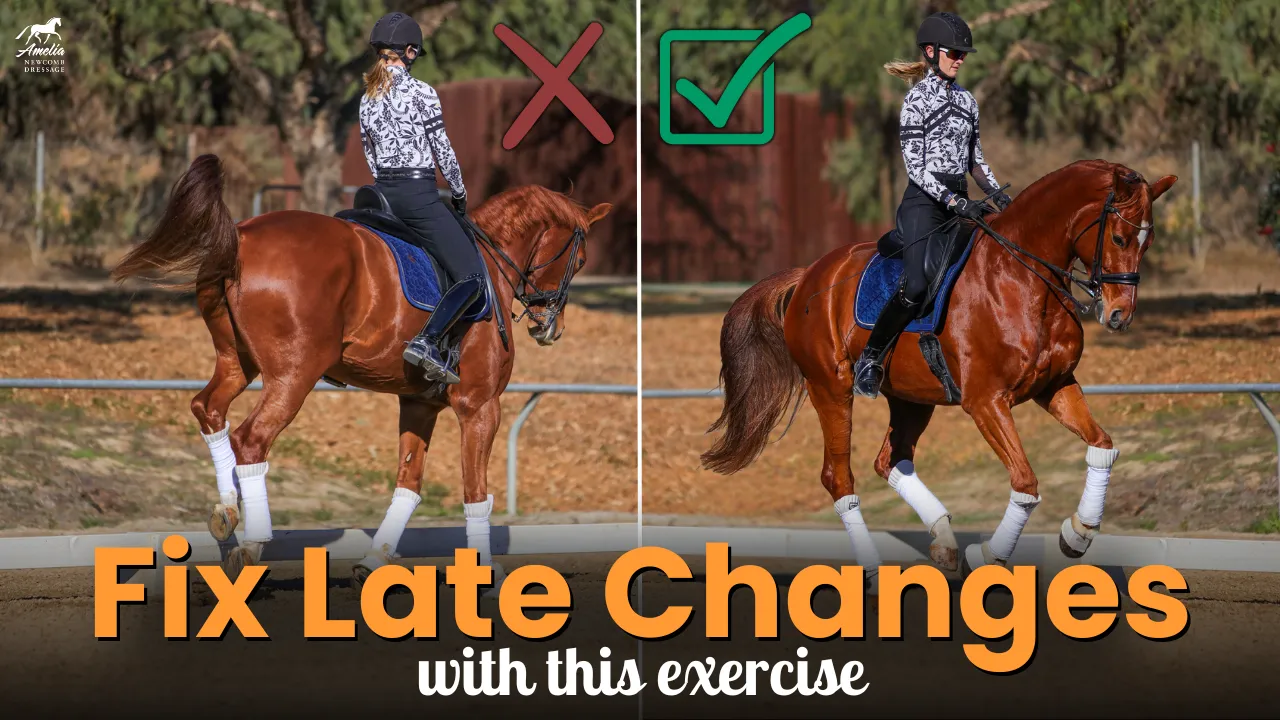Flying changes are a significant milestone in dressage, showcasing the horse’s balance, strength, and responsiveness. However, when a horse changes late behind, it presents a challenge to resolve it!
Why Does a Horse Change Late Behind?
Late changes behind often stem from a lack of engagement or understanding. The hind legs must actively push through the transition to create a clean, simultaneous change. Weakness, imbalance, or miscommunication between rider and horse can exacerbate the issue.
Steps to Fix Late Changes Behind
1. Strengthen Walk-to-Canter Transitions
Start by revisiting the basics:
- Ensure your horse is responsive to a light aid in walk-to-canter transitions.
- Focus on the hind leg pushing forward and through into the canter with no trot steps.
- Avoid over-relying on the reins; the horse should jump into the canter rather than pulling themselves into it with the forehand.
2. Use Haunches-In Before the Change
To help the horse engage the hind leg:
- When transitioning, think of a slight haunches-in before the flying change.
- For example, when preparing to change from left lead to right lead, keep the shoulders aligned left and gently push the haunches to the right. This encourages the right hind leg to step through during the change.
3. Encourage Hind Leg Awareness
Sometimes, horses struggle with coordination. A useful exercise is:
- Ride a circle to focus on the hind leg engagement.
- On the circle, with your whip in the inside hand, gently tickle with the whip to encourage the horse to think about swapping with just the hind legs. This is unconventional but it can help the horse associate the transition with hind leg action.
4. Return to Basics: Engagement and Strength
Late changes often highlight overall engagement issues. Address these with:
- Trot-to-canter and canter-to-trot transitions to build strength and responsiveness.
- Introduce half-steps or piaffe exercises to encourage hind leg activity and quickness.
- Gradually increase the horse’s ability to collect and push through with its hindquarters.
Key Tips
- Avoid using excessive force. Pushing harder won’t necessarily fix late changes—it’s about precision and timing.
- Consistency in training is critical. Regularly practice exercises that promote hind leg strength and engagement.
- Re-teaching a horse to change cleanly takes time and persistence.
Final Thoughts
Flying changes are complex and require a deep connection between horse and rider. By focusing on engagement, strength, and communication, you can guide your horse toward achieving clean, balanced changes. Stay consistent, celebrate progress, and remember that refinement is part of the journey.
Happy riding!








































